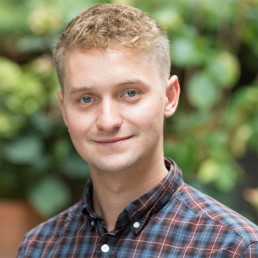
Written by Jac Bastian
Has worked at Diversity Role Models for 4 years and has trained thousands of staff members, delivered workshops to students at every phase and created a range of teaching resources on LGBT+ inclusion.
For most of us, diversity is the reality of our schools. We are communities made up of people from a wide range of backgrounds, cultures, religions and so much more. Diversity Role Models’ recent report found that 14% of secondary students surveyed identified as part of the LGBT+ community. This diversity is the reality of school life, but ensuring that students and staff who are LGBT+ feel like they belong in our schools is the challenge we all face. Sadly, our report also found that only 27% of secondary students felt that someone who was LGBT+ would feel safe to come out at their school. If we cannot be ourselves it is hard to feel like we belong.
For nearly 10 years Diversity Role Models have brought LGBT+ and ally role models into classrooms to celebrate our differences, to embed empathy and to help transform school cultures to ensure all students feel like they belong. In primary we focus on celebrating diverse families and in secondary we explore the impact of discrimination and derogatory language. In my four years working with the charity, I’ve had the privilege of seeing first-hand the impact of role model stories on young people in schools across the country.
For me, our workshops have two clear purposes. Firstly, it is to provide positive representation, reassurance and inspiration for any students who may be questioning their sexual orientation or gender identity. To let them know that they can live a happy, successful life being their true self and they deserve to feel like they belong in their school. I’ve had so many students tell me that our workshop was the first time they’d seen someone like themselves represented in their school and we know what a difference that can make.
The second purpose of our workshops is for all the other students who do not identify as part of the LGBT+ community. It is vital that those students understand the role they have in shaping the culture of a school and understand what they can do to ensure others feel like they belong. A personal highlight of mine was hearing two Year 10 boys discussing homophobic language after hearing a powerful personal story on the subject from our role model Alex. One turned to the other and said, “you know when we call James a faggot…maybe that’s not ok!”. It, of course, seems obvious to us that such behaviour is not ok. But allowing students the chance to reflect on the often-unintended impact of such language allowed them the space to reconsider and change their behaviours. At the end of our workshops 84% of secondary students anonymously say they would support a friend who came out as LGBT+. That’s the power of personal stories. If I’d seen even half that number of my classmates say they’d have supported me to come out it would have totally changed my time at school.
One of the key findings of our report was that schools that regularly taught about LGBT+ identities were also the schools in which students said that homophobic, biphobic and transphobic language and bullying was less common. To ensure our LGBT+ students feel like they belong we must embed visibility and actively celebrate the diversity of our school communities. We must embed this in our ethos and values, in our lessons, assemblies, libraries, displays and even in the examples we use. A member of our Student Voice Group once told me that her maths teacher used an example of a same-sex couple in a maths problem and from that moment on she knew there was at least one person at the school she could talk to if she needed. No matter how small, each action we take can make a difference.
To make this easier for teachers we’ve made a series of videos featuring stories from our inspiring role models freely available for this term. With LGBT History Month almost upon us, now is the time to actively embrace this visibility across the curriculum and embed it in the culture of our schools. Our schools are already diverse and it’s time we took the necessary steps to ensure every student feels like they belong.

